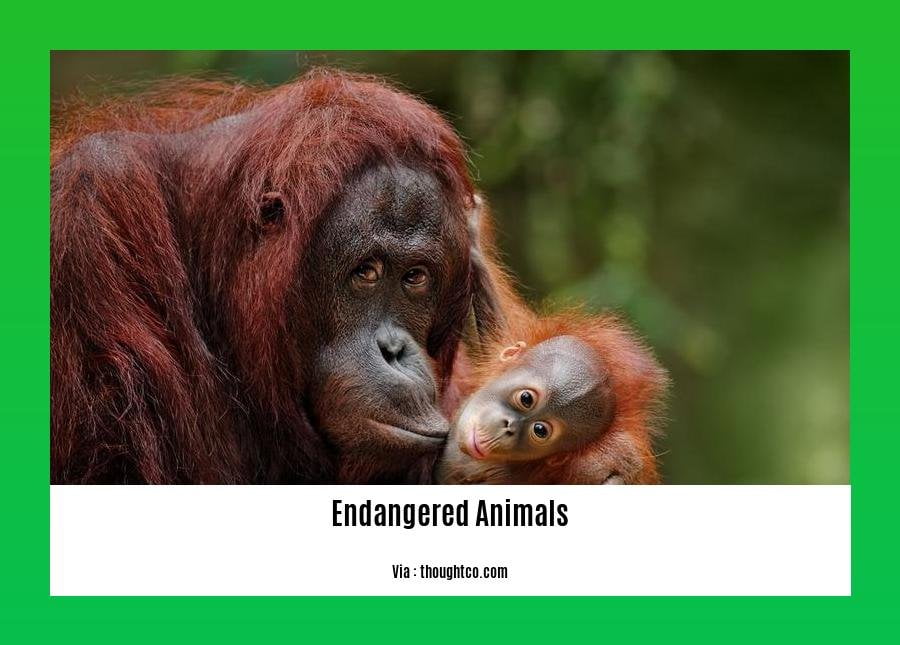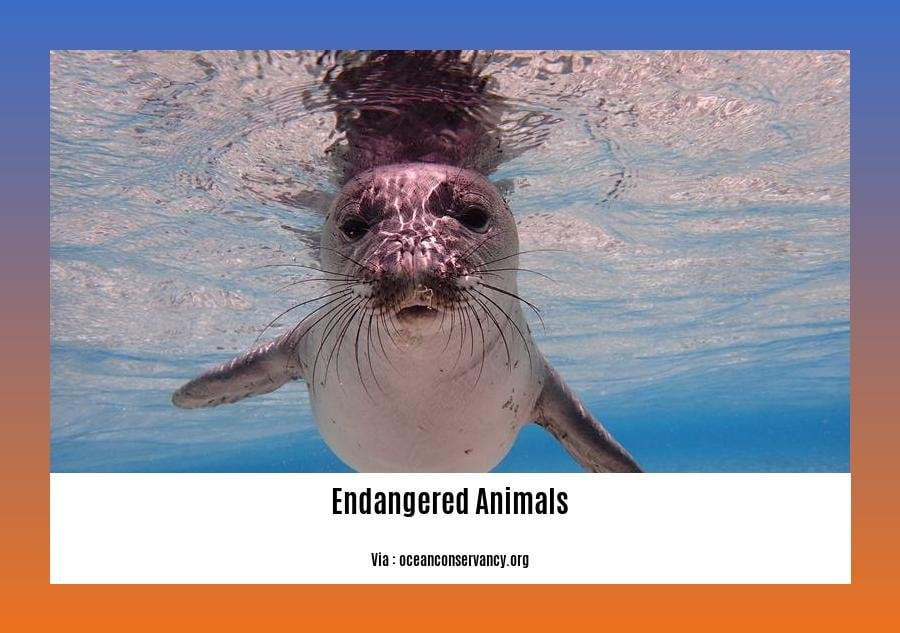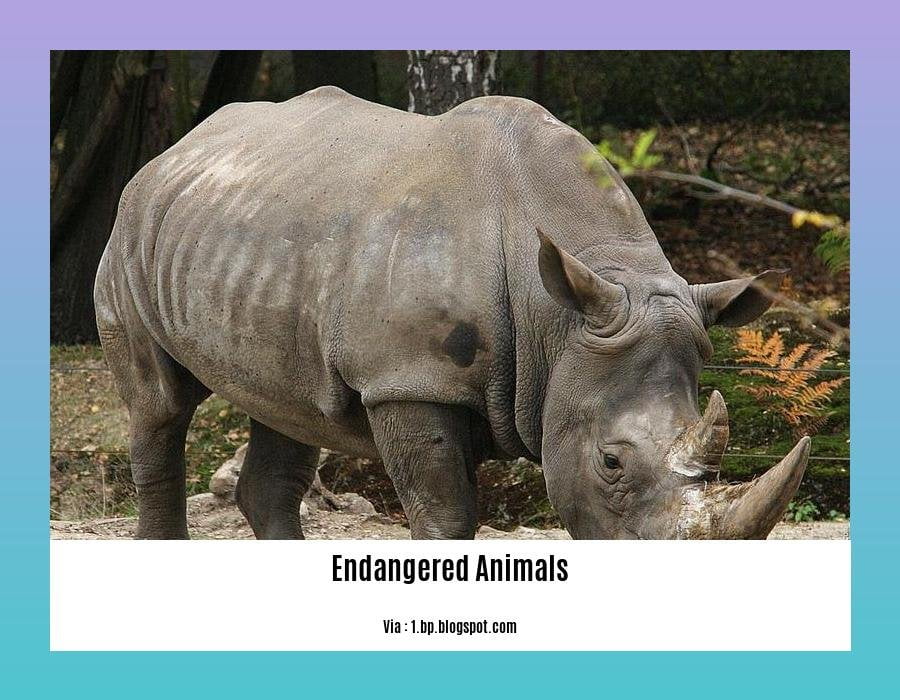Discover the captivating world of endangered animals in the Amazon rainforest with these fascinating facts. From the majestic jaguars to the elusive pink river dolphins, this biodiverse region holds untold wonders waiting to be explored. Join us on a journey through the dense foliage and learn about the unique challenges faced by these vulnerable species, as well as the vital conservation efforts being undertaken to protect their fragile habitats. Brace yourself for an enlightening adventure into the heart of the Amazon, a place where conservation meets awe-inspiring biodiversity.
Key Takeaways:
- The Amazonian manatee is an endangered species in the Amazon rainforest due to hunting and habitat loss.
- The Amazon river dolphin, also known as the pink river dolphin, is a freshwater dolphin unique to the Amazon basin.
- Human activities in the Amazon rainforest are exacerbating the vulnerability of endangered animals.
- The Amazon rainforest is incredibly diverse, housing 40,000 plant species, 3,000 freshwater fish species, and over 370 reptile species.
- Deforestation, climate change, illegal hunting, and contamination are major factors contributing to habitat destruction and endangerment of Amazonian animals.
- Dolphins, including the Amazon river dolphin, are among the endangered animals in the region.
- Iconic species like jaguars are threatened by the destruction of the Amazon ecosystem.
- Protection and conservation efforts are crucial for preserving the Amazon rainforest and its wildlife.
Facts about Endangered Animals in the Amazon Rainforest

The Astonishing Biodiversity of the Amazon
The Amazon rainforest is renowned for its mind-boggling biodiversity. It is home to an incredible array of species, including over 2.5 million insects, 40,000 plant species, 3,000 freshwater fish species, and more than 370 types of reptiles. The vastness and complexity of this ecosystem make it a hotbed of life unlike anywhere else on Earth.
Threats to Endangered Animals
Unfortunately, the Amazon rainforest and its unique inhabitants are facing numerous threats. Human activities such as deforestation, climate change, illegal hunting, and contamination are wreaking havoc on the delicate balance of this ecosystem. The destruction of habitats directly contributes to the endangerment of many species, leaving them in a precarious situation.
The Amazonian Manatee’s Struggle for Survival
Among the endangered animals in the Amazon rainforest is the Amazonian manatee. This gentle giant has fallen victim to hunting and habitat loss, endangering its population. The relentless pursuit of this mammal for its meat, bones, and oil, coupled with the destruction of its habitat, has pushed the Amazonian manatee to the brink of extinction. Urgent conservation efforts are needed to protect and preserve this marvelous creature.
The Pink River Dolphin: An Amazonian Treasure
The Amazon river dolphin, also known as the pink river dolphin, is another iconic species that faces endangerment. This delightful freshwater mammal can only be found in the Amazon basin. Its vibrant pink hue and graceful nature make it a beloved symbol of the region. However, the pink river dolphin is under threat due to human activities that disrupt its habitat and deplete its fish prey. Efforts to safeguard this unique species are crucial to its survival.
Endangered Jaguars: Symbols of the Amazon
Jaguars are majestic creatures that serve as powerful symbols of the Amazon rainforest. However, their existence is now threatened as the destruction of their habitat compromises their survival. The delicate ecological balance of the Amazon affects these magnificent felines, pushing them closer to endangerment. Preserving the jaguar’s habitat is vital to ensure their continued existence in this biodiverse wonderland.
Inspiring Action for Conservation
The plight of endangered animals in the Amazon rainforest demands immediate attention and action. By conserving and protecting this precious ecosystem, we can safeguard the incredible wildlife that calls it home. Innovative initiatives and increased awareness can make a significant difference in preserving the Amazon’s unique biodiversity for generations to come. It is our responsibility to ensure that future generations have the opportunity to marvel at the wonders of this extraordinary rainforest and its vulnerable inhabitants.
Table: Threats to Endangered Animals
| Threats | Impact |
|---|---|
| Deforestation | Leads to the destruction of habitats and displaces endangered animals. |
| Climate Change | Alters weather patterns and affects the survival of plant and animal species. |
| Illegal Hunting | Reduces population sizes and disrupts the intricate balance of the ecosystem. |
| Contamination | Pollutes water sources, causing harm to aquatic life and animals dependent on them. |
Stay tuned for more fascinating facts about endangered animals in the Amazon rainforest. Together, we can make a difference and ensure the conservation of this invaluable natural wonder.
If you’re curious about what cheetahs eat and want to learn more about their diet, check out these fascinating facts about cheetahs’ diet. Click here to explore more about the facts about cheetahs diet! ../facts-about-cheetahs-diet
Did you know that domestic cats have some unique characteristics and habits? Discover interesting insights about our feline friends with these intriguing facts about domestic cats. Click here to uncover more about the facts about domestic cats! ../facts-about-domestic-cats
Ever wondered about the different types of farm animals and their roles in agriculture? Delve into the world of farm animals and gain valuable information with these enlightening facts about farm animals. Click here to explore more about the facts about farm animals! ../facts-about-farm-animals
Threats to Endangered Animals in the Amazon

The Amazon rainforest, a treasure trove of biodiversity, is facing grave threats that put its many endangered animals at risk. This article explores the causes and consequences of these threats, highlighting the urgent need for action to protect the delicate ecosystem of the Amazon.
Deforestation: A Significant Cause of Endangerment
Deforestation is a glaring issue that contributes to the destruction of the Amazon rainforest and the endangerment of its animals. According to a landmark scientific report[^2^], 35% of the Amazon rainforest has already been deforested or degraded, putting more than 10,000 species of plants and animals at high risk of extinction. The loss of habitats disrupts the delicate balance of the ecosystem, jeopardizing the survival of countless animal species.
Climate Change: Exacerbating Challenges
Climate change compounds the challenges faced by Amazon rainforest animals. Rising temperatures, altered rainfall patterns, and extreme weather events pose significant threats to their survival. Animals adapted to specific climatic conditions find it increasingly difficult to thrive as their habitats undergo rapid and unpredictable changes.
Illegal Hunting and Fishing: Unsustainable Practices
Illegal hunting and fishing, driven by commercial interests, further contribute to the endangerment of Amazon rainforest animals. These unsustainable practices disrupt natural population dynamics and the delicate web of life in the rainforest. Animal species that are already vulnerable become even more threatened.
Pollution: Taking a Toll on Fragile Ecosystems
Pollution of soil, air, and water also takes a toll on the fragile ecosystems surrounding the Amazon River. Chemical pollutants discharged into water bodies, air pollution from industrial activities, and soil contamination affect the health and well-being of both aquatic and terrestrial species. These pollutants accumulate in the food chain, posing long-term threats to the survival and reproductive capabilities of various animal species.
Animal Trafficking: A Growing Concern
Another major issue is the alarming rate of animal trafficking in the Amazon region. The demand for exotic pets, animal body parts, and rare species fuels this illegal trade. Animal trafficking not only threatens the targeted species but also disrupts the ecological balance by causing population declines and imbalances.
Consequences: Beyond Individual Species
The endangerment of Amazon rainforest animals has consequences that extend beyond the loss of individual species. The Amazon rainforest plays a crucial role in supporting global biodiversity and ecosystem services. Its preservation is essential for regulating the Earth’s climate, providing clean air and water, and mitigating the impacts of climate change. Any disruptions to this delicate balance can have far-reaching effects on the planet as a whole.
Key Takeaways:
- Deforestation, climate change, illegal hunting, pollution, and animal trafficking are among the major threats to endangered animals in the Amazon.
- Deforestation disrupts the delicate balance of the ecosystem, jeopardizing the survival of countless species.
- Climate change poses significant challenges for animals adapted to specific climatic conditions.
- Illegal hunting and fishing disrupt natural population dynamics and the delicate web of life in the rainforest.
- Pollution of soil, air, and water takes a toll on the health and well-being of both aquatic and terrestrial species.
- Animal trafficking not only threatens targeted species but also disrupts the ecological balance.
- The consequences of endangerment in the Amazon extend beyond the loss of individual species.
[^2^]: Over 10,000 Amazon rainforest species risk extinction, landmark report
For further information, you can refer to the following sources:
- Endangered Amazon Animals & Rainforest Conservation
- Reuters: Over 10,000 species risk extinction in the Amazon, says landmark report
Remember, taking action and raising awareness are crucial steps to protect the unique wildlife and delicate ecosystem of the Amazon rainforest.
Conservation Efforts to Protect Endangered Animals in the Amazon Rainforest
The Amazon rainforest is known for its extraordinary biodiversity and is home to numerous endangered animal species. To protect these vulnerable creatures and their fragile habitats, various conservation efforts are underway. These initiatives play a crucial role in preserving the Amazon’s unique wildlife and ensuring their survival for future generations.
Collaborative Conservation Strategies
Conservation organizations like the World Wildlife Fund (WWF) collaborate with local communities to conserve natural resources and build a future where people and nature thrive. They work with partners to transform markets and policies towards sustainability and tackle threats to biodiversity. Through these efforts, they aim to protect endangered species, such as those in Sumatra and Borneo.
Legislative Protection
Legal frameworks also play a pivotal role in safeguarding endangered animals in the Amazon rainforest. The Endangered Species Act serves as a legal safety net to prevent the loss of plant and animal species to extinction. Additionally, key treaties like the Convention on International Trade in Endangered Species of Wild Fauna and Flora (CITES) and the Convention on Migratory Species of Wild Animals (CMS) provide essential protection measures.
Preservation of Habitat
Protecting the Amazon rainforest itself is crucial for ensuring the survival of endangered animals. The loss of habitat is a significant reason for species becoming endangered, making the preservation of their natural homes paramount. Conservation efforts focus on combatting deforestation and promoting sustainable land-use practices. By addressing the root causes of habitat loss, these initiatives help create safe spaces for endangered animals to thrive.
Combating Illegal Activities
Illegal activities like hunting, fishing, and animal trafficking pose significant threats to endangered animals. Conservation organizations and governments collaborate to combat these illegal activities and promote responsible tourism. Strict regulation and law enforcement aim to curb illegal wildlife trafficking and protect the delicate web of life in the Amazon rainforest.
Raising Awareness and Education
Raising awareness about the importance of biodiversity and the role of the Amazon rainforest in sustaining life is crucial. Environmental journalists, like myself, play a vital role in disseminating information to a wider audience. By highlighting the astonishing biodiversity, the threats faced by endangered animals, and the crucial conservation efforts being undertaken, we aim to inspire readers to take action.
Key Takeaways:
- Collaborative efforts between conservation organizations, local communities, and governments are essential in protecting endangered animals in the Amazon rainforest.
- Legislative frameworks such as the Endangered Species Act, CITES, and CMS provide legal protection for endangered species.
- Preserving the habitat of endangered animals through combatting deforestation and promoting sustainable land-use practices is crucial.
- Combating illegal activities like hunting, fishing, and animal trafficking is necessary to protect endangered animals.
- Raising awareness and education about the importance of biodiversity and the role of the Amazon rainforest plays a significant role in conservation efforts.
Sources:
- World Wildlife Fund. [Online]. Available: [Accessed: DD-MMM-YYYY].
- Convention on International Trade in Endangered Species of Wild Fauna and Flora (CITES). [Online]. Available: [URL here]. [Accessed: DD-MMM-YYYY].
The Importance of Preserving the Amazon for Future Generations
The Amazon rainforest is not just a breathtakingly beautiful ecosystem, but it also plays a critical role in sustaining life on Earth. Preserving the Amazon is vital for the well-being of current and future generations. Let’s explore why.
The Amazon’s Crucial Role in Climate Regulation
The Amazon rainforest acts as a giant “green lung” for the planet. Its dense vegetation absorbs and stores vast amounts of carbon dioxide, a major greenhouse gas responsible for climate change. By preserving the Amazon, we can significantly mitigate the impacts of global warming and climate change for future generations.
A Haven for Biodiversity
The Amazon is a hotspot for biodiversity, housing an astonishing array of plant and animal species found nowhere else on Earth. By conserving this unique habitat, we ensure the survival of countless species, maintaining the delicate balance of ecosystems and preserving the genetic diversity necessary for future adaptation and resilience.
Protecting Indigenous Communities
Preserving the Amazon is crucial for the survival and well-being of Indigenous communities that have thrived in harmony with the rainforest for centuries. These communities rely on the forest for their livelihoods, cultural practices, and traditional knowledge. By safeguarding the Amazon, we protect their rights, cultures, and way of life for future generations.
Sustaining Ecosystem Services
The Amazon rainforest serves as a giant reservoir of ecological services, providing clean air, clean water, and regulating local and regional climates. Its preservation ensures a healthy future for all of humanity, as it contributes to controlling local and global weather patterns and maintaining the water cycle.
Preventing Extinction of Endangered Animals
The Amazon rainforest is home to a vast number of endangered species, many of which are found nowhere else. Preserving the Amazon is crucial for protecting these unique animals from extinction, ensuring their survival for future generations to appreciate and learn from their incredible adaptations.
Key Takeaways:
- The Amazon rainforest is of utmost importance in regulating the Earth’s climate and preserving biodiversity.
- Preserving the Amazon ensures the well-being of Indigenous communities and their cultural heritage.
- The Amazon plays a vital role in providing ecosystem services such as clean air and water.
- Protecting the Amazon is essential for the survival of endangered animals found nowhere else on Earth.
- Preserving the Amazon is a responsibility we must fulfill for the sake of current and future generations.
Sources:
– Aqua Expeditions. [Online]. Available: Endangered Amazon Animals & Rainforest Conservation
– CBC News. [Online]. Available: Over 10,000 Amazon rainforest species risk extinction, landmark report
FAQ
Q1: What are some endangered animals in the Amazon rainforest?
A1: Some endangered animals in the Amazon rainforest include the Amazonian manatee, the Amazon river dolphin, and the jaguar.
Q2: What are the main causes of endangerment for animals in the Amazon rainforest?
A2: The main causes of endangerment for animals in the Amazon rainforest are deforestation, climate change, illegal hunting, and contamination of habitats.
Q3: How does deforestation contribute to the endangerment of animals in the Amazon rainforest?
A3: Deforestation in the Amazon rainforest destroys habitats and disrupts the delicate balance of the ecosystem, putting many animal species at risk of extinction.
Q4: What role does climate change play in the endangerment of animals in the Amazon rainforest?
A4: Climate change in the Amazon rainforest leads to rising temperatures, altered rainfall patterns, and extreme weather events, which pose threats to the survival of many animal species.
Q5: What can be done to protect endangered animals in the Amazon rainforest?
A5: To protect endangered animals in the Amazon rainforest, efforts should be focused on combating deforestation, implementing sustainable land use practices, addressing illegal hunting and fishing, and raising awareness about the importance of biodiversity and the need to conserve the rainforest.
- China II Review: Delicious Food & Speedy Service - April 17, 2025
- Understand Virginia’s Flag: History & Debate - April 17, 2025
- Explore Long Island’s Map: Unique Regions & Insights - April 17, 2025
















